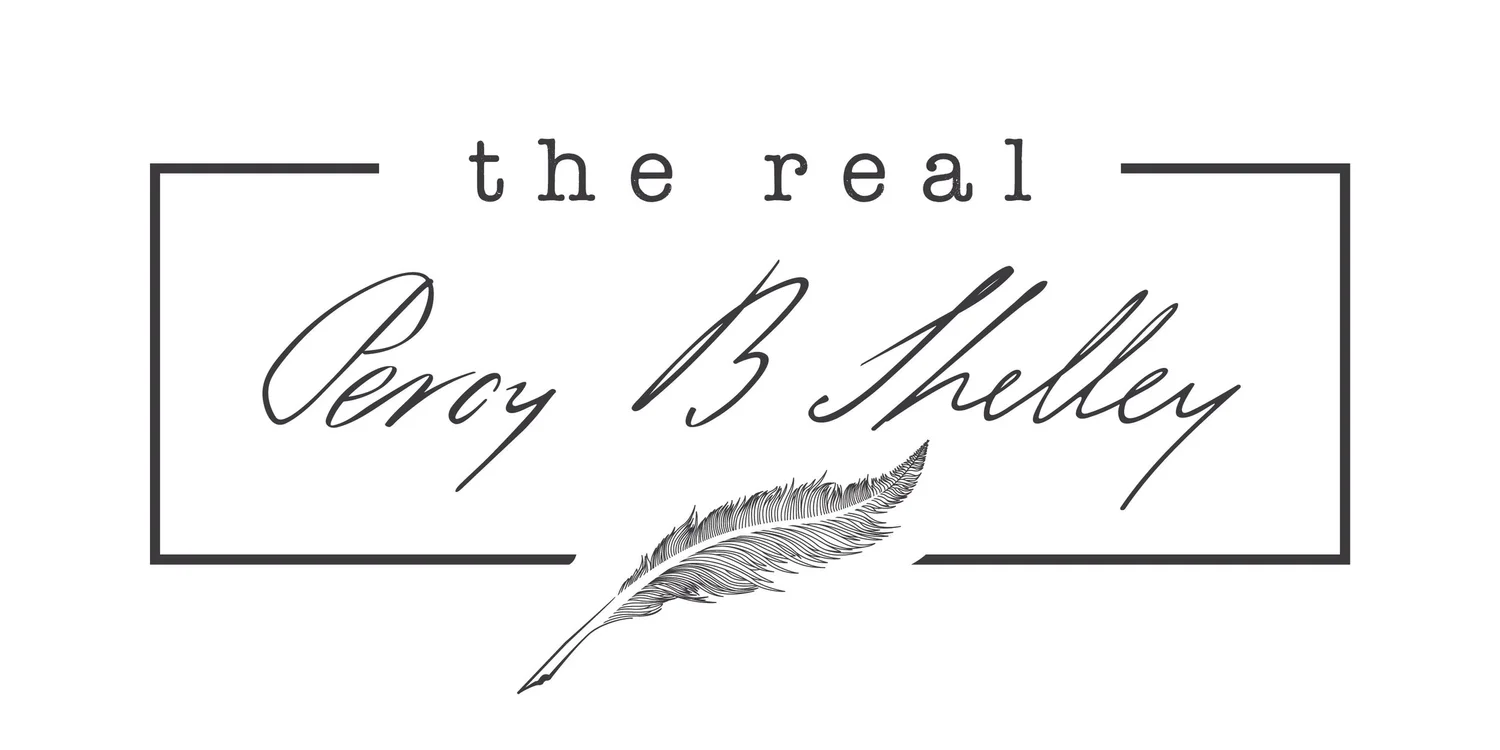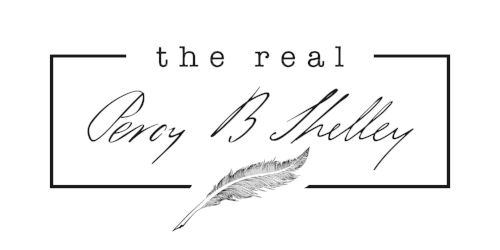Visit my Shelley blog! www.grahamhenderson.ca
Introduction
In September at the London Shelley Conference 2017 I had the pleasure of listening to an expert, Professor Tom Mole, speak about one of my favourite subjects: what Victorians thought of Percy Bysshe Shelley. A link to the speech is provided below.
I have written at length about this myself including here: "My Father's Shelley - A Tale of Two Shelleys". This is actually extremely important because what the Victorians thought about Shelley set the tone for succeeding generations of readers and critics. They played a crucial and controversial role in the transmission of Shelley's poetry to the modern era.
There have been many treatments of this subject. But to set the scene, it is important to remember that Shelley was not very well known in his own time. Shortly after he died Mary prepared a slim volume called "Posthumous Poems" which presented a very different Shelley from the one that lived and breathed. She gave the world a poet who was a far cry from the radical revolutionary who died in 1822. It was the beginning of a tradition of misrepresentation that has continued almost to this day. My views on this have been recently tempered by the brilliant Nora Crook, whose presentation on the question of Mary's editing of Shelley can be seen here. Other views appear in Michael Gamer's wonderful book, "Romanticism, Self-Canonization, and the Business of Poetry". You can buy it here. Then there is a wonderful book by one of the most underrated Shelley scholars of all time, Roland Duerksen: "Shelleyan Ideas in Victorian Literature."
If you want to get to the crux of the issue, look no further than this brilliant encapsulation by Frederich Engels:
"Shelley, the genius, the prophet, finds most of [his] readers in the proletariat; the bourgeouise own the castrated editions, the family editions cut down in accordance with the hypocritical morality of today”
During these times, there was a struggle for Shelley that was fought out between what in modern terms could be called the "left" and the "right". The "hypocrites" of whom he spoke, the Victorian bourgeoisie, owned the sort of anthologies which Tom Mole talks about in this wonderful, engaging and accessible lecture. Exactly who was the Shelley that the anthologies presented to the Victorian reading public? Professor Mole provides an astonishingly well researched overview of over two hundred different anthologies dating from the years 1822-1900. He has saved us all the trouble!
in his book, Mole did not just focus on Shelley, but he does so in his speech. The anthologies of which he speaks were, he writes, "magic casements" that showcased the "oceanic breadth of romantic poetry, while at the same time framing and limiting the readers view of it." This matters because Shelley was a poet who set out to change the world. As he wrote to Leigh Hunt once, “I am undeceived in the belief that I have powers deeply to interest, or substantially improve, mankind.” An intensely political individual, I think Shelley would have been horrified to have been presented to the reading public - many of whom would have been from the proletariat - as a lyric love poet.
But as Mole demonstrates, the anthologists favoured his short lyrics over his longer more political poems. When they did turn to his longer poetry, they had tricky choices to make. Poems like Queen Mab, The Cenci and Alastor were clearly associated with subversive political themes which the bourgeoisie had absolutely no interest in showcasing. The solution was to focus on what Mole calls "passages of isolated description" which, he notes, is "exactly what Shelley sought to avoid."
The pickings were thin, but the anthologists were nothing if not dedicated to their task. Mole walks of through three examples from the aforementioned poems. The most popular excerpt from Queen Mab was a descriptive section: lines 420-449. Mole points out that the passage selected, presents a lyrical, sylvan environment free from "narrative, tension and decay." In other words the exact opposite of what Shelley would have wanted a reader to encounter. We have to remember that during the period immediately after his death, Chartists and other radicals were gorging themselves on the radicalism of Queen Mab - to thus drain it of its political foundations was a grotesque misappropriation.
Mole does make the point that Victorian anthologies nonetheless circulated what amounted to links to the subversive substrata that existed beyond their pages. For my part I think the damage that was done far outweighs this modest gain. Even today those of us inspired by Shelley's radicalism, for example Paul Foot, must wrestle with the legacy of misdirection these incredibly influential anthologies left behind. To here Foot on the subject, please read the entirety of his speech to the London Marxism Conference of 1981 here.
I, however, have said enough - let's turn our attention to Professor Mole!!! You will thoroughly enjoy his presentation.
About Tom Mole
Tom Mole is Reader in English Literature and Director of the Centre for the History of the Book at the University of Edinburgh in Scotland. He studied at the University of Bristol and has worked at the University of Glasgow, the University of Bristol and, most recently, as Associate Professor and William Dawson Scholar at McGill University in Montreal, Canada. You can find him on Twitter here. Tom's website is here. Read more about his new book here.
About Tom's Book
"This insightful and elegantly written book examines how the popular media of the Victorian era sustained and transformed the reputations of Romantic writers. Tom Mole provides a new reception history of Lord Byron, Felicia Hemans, Sir Walter Scott, Percy Bysshe Shelley, and William Wordsworth--one that moves beyond the punctual historicism of much recent criticism and the narrow horizons of previous reception histories. He attends instead to the material artifacts and cultural practices that remediated Romantic writers and their works amid shifting understandings of history, memory, and media. Mole scrutinizes Victorian efforts to canonize and commodify Romantic writers in a changed media ecology. He shows how illustrated books renovated Romantic writing, how preachers incorporated irreligious Romantics into their sermons, how new statues and memorials integrated Romantic writers into an emerging national pantheon, and how anthologies mediated their works to new generations. This ambitious study investigates a wide range of material objects Victorians made in response to Romantic writing--such as photographs, postcards, books, and collectibles--that in turn remade the public's understanding of Romantic writers. Shedding new light on how Romantic authors were posthumously recruited to address later cultural concerns, What the Victorians Made of Romanticism reveals new histories of appropriation, remediation, and renewal that resonate in our own moment of media change, when once again the cultural products of the past seem in danger of being forgotten if they are not reimagined for new audiences."
From the Back Cover!
"This ambitious book is a major contribution to our understanding of Romanticism, not only what it was but also what it became. It will be an essential guide to the web of reception and remaking for period specialists, while also posing urgent questions--and answers--for our own moment of hypermediation."--Clifford Siskin, New York University
"What have Victorian temperance lectures to do with Shelley, retrofitted illustrations to say about Wordsworth, or snuffboxes and postcards to tell us about Scott? In fascinating case studies, Tom Mole traces the unexpected shapes that literature is requisitioned to fill in the interests of its own survival. Mole writes with relish and flair, and with a canny awareness that these are the stories of what happens as texts and reputations are remade and reused for more purposes than those of the professional critic."--Kathryn Sutherland, University of Oxford
"Original and compelling. What the Victorians Made of Romanticism presents a number of valuable insights and perspectives on its topic."--Antony H. Harrison, author of Victorian Poets and Romantic Poems: Intertextuality and Ideology
"Convincing and nuanced. Mole extends existing knowledge of the Victorian reshaping of Romanticism by tracing the cultural transmission of selected Romantic poets through often overlooked reception practices such as sermons, illustrations, anthologies, and statues."--Kim Wheatley, author of Romantic Feuds: Transcending the "Age of Personality"
"A splendid book. Mole provides a much needed perspective on how the broader culture of the Victorian age responded to a highly selective and heavily mediated and remediated version of Romanticism."--David G. Riede, author of Matthew Arnold and the Betrayal of Language
Background on the Shelley Conference 2017
What follows is an edited version of the CFP prepared by conference organizer, Anna Mercer for The Shelley Conference 2017. You can read the original version here.
On 14 and 15 of September 2017 a two-day conference in London, England celebrated the writings of two major authors from the Romantic Period: Percy Bysshe Shelley (PBS) and Mary Wollstonecraft Shelley (MWS).
There is a continuing scholarly fascination with all things 'Shelley' which is due in part to the
unprecedented access we now have to their texts (in annotated scholarly editions) and manuscripts (presented in facsimile and transcript). The Shelleys' works are more readily available than ever before. However somewhat disturbingly, there is no annual or even semi-regular conference dedicated to PBS (comparable to those that exist for other Romantic writers). It was this fact that prompted Anna Mercer and Harrie Neal to organise The Shelley Conference 2017.
Shockingly, it has taken almost 200 years for detailed, comprehensive editions of PBS's works to appear. I believe he is the only major poet in the English literary canon to be so woefully under served. However, two editions are nearing completion: The Complete Poetry of Percy Bysshe Shelley edited by Donald Reiman, Neil Fraistat and Nora Crook; and The Poems of Shelley edited Kelvin Everest, G.M. Matthews, Michael Rossington and Jack Donovan. There is much, therefore, to celebrate. In addition there is the astonishing Shelley-Godwin Archive which will provide, according to the website, "the digitized manuscripts of Percy Bysshe Shelley, Mary Wollstonecraft Shelley, William Godwin, and Mary Wollstonecraft, bringing together online for the first time ever the widely dispersed handwritten legacy of this uniquely gifted family of writers." It must be seen to be believed.
Conferences at Gregynog in 1978, 1980, and 1992 and the Percy Shelley Bicentennial Conference in New York in 1992 have provided a wonderful legacy for future Shelleyan academics, and it is in the spirit of these events The Shelley Conference 2017 was undertaken. MWS is included in this new conference, as she also does not have her own regular academic event. However, the recent conference 'Beyond Frankenstein's Shadow' (Nancy, France, 2016) focused specifically on MWS, and the emphasis placed on her work at the 'Summer of 1816' conference (Sheffield, 2016) indicated that her role on the main stage of Romanticism is increasingly appreciated.
It is for these reasons that the 'Shelley' of the conference title was left ambiguous. The Shelleys are increasingly seen as a collaborative literary partnership, and modern criticism reinforces the importance of reading their works in parallel. The nuances of this, however, are far from simple, and this statement does not imply there is anything like a sense of either consistent 'unity' or 'conflict' when considering the Shelleys' literary relationship. This is the kind of issue which was explored at The Shelley Conference 2017 by speakers such as the legendary Nora Crook.


